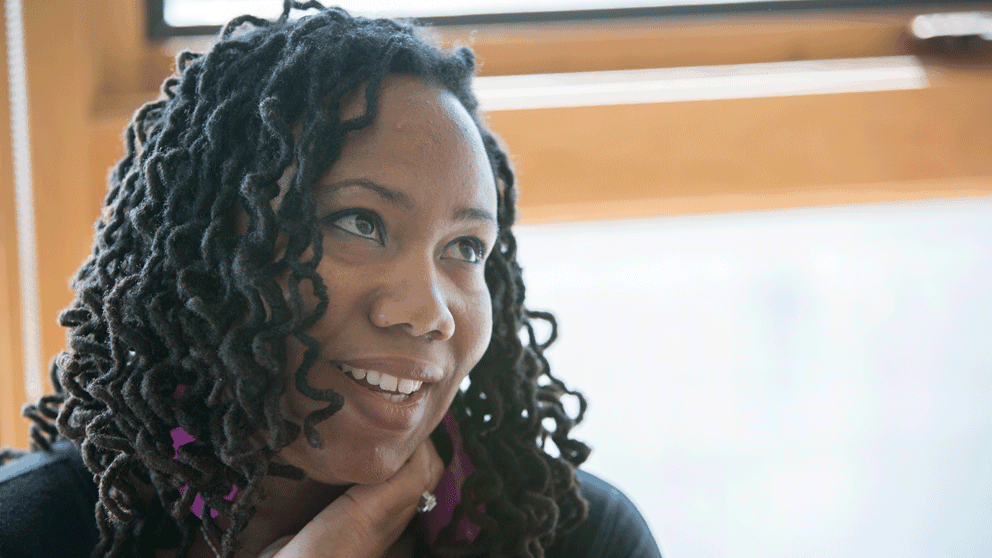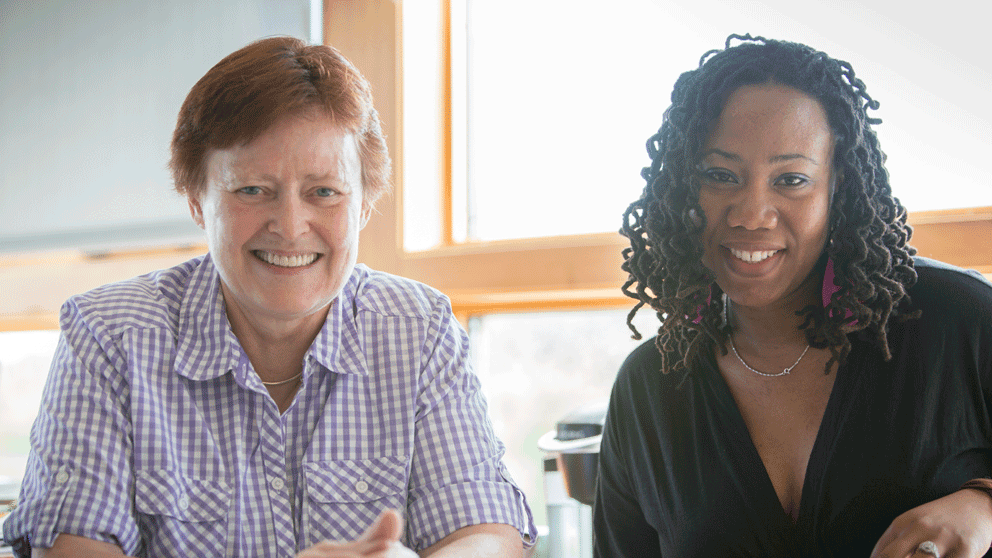
For Jackson Laboratory postdoctoral associate Danitza Nébor, Ph.D., studying sickle-cell disease isn’t just a research project: It’s a personal mission.
The native of Guadaloupe, a French overseas territory in the southern Caribbean Sea, grew up knowing she carried one copy of the genetic mutation that causes the disease; two copies (one from each parent) would have made her a patient. She also knew she wanted to work someday for the French national institute of health and medical research, known as Inserm, which works with the Centre Caribeen de la Drépanocytose, the sickle-cell disease center in her home country.
“At first I thought I was going to be a lawyer, to become an advocate for public policy supporting the center,” Nébor says. “Instead I went into science to study sickle-cell disease. I am motivated by the friends and family members who are affected by the condition.”
Sickle-cell disease is named for abnormal, sickle-shaped hemoglobin cells. Hemoglobin is the oxygen-carrying protein in red blood cells. The condition can cause a wide range of serious health problems, including acute pain, severe anemia, vulnerability to infection, stroke and damage to the eyes, heart, lungs and kidneys.
The disease primarily strikes people of African origin. Worldwide about 300,000 babies are born each year with the disease; in the U.S., it’s about one in every 365 African-American children. (Nébor herself is expecting her first baby, and as her husband is not a sickle-cell carrier she is confident that the baby will be born without the disease.)
After Nébor earned her undergraduate and master’s degrees at the University of Poitiers in France, she earned a postgraduate degree at the University of Paris VII, and completed her Ph.D. through combined work at the University of French West Indies, the University of Paris VII and Inserm.
Nébor came to the laboratory of Professor Luanne Peters, Ph.D., in 2012. Peters recalls that Nébor’s cover letter stood out from the hundreds of other applicants’: “She opened with, ‘I am Danitza Nébor,’ instead of the kind of long, formal introduction most applicants use. I thought, this is a person who knows who she is and where she wants to go.”

And normally, foreign candidates for postdoctoral positions conduct their first meeting online via Skype or videoconference. “But not Danitza—she was determined to come to Bar Harbor to meet me in person. It took her about 36 hours to get here!”
In the Peters lab, Nébor searches for genetic modifiers of the expression of sickle-cell anemia—in other words, the gene variants that reduce the severity of the disease in patients with two copies of the sickle-cell gene.
“We have a mouse model that does not actually have sickle-cell anemia, but what it does have is a high level of embryonic hemoglobin in adult mice,” Nébor explains. “Normally embryonic hemoglobin is expressed only in the embryo and is not present in the adult. For decades now we have known that humans with sickle-cell disease that have a high level of fetal globin do much better than patients without this high level.
“So our goal is to try to understand why our mouse model has this high expression of embryonic hemoglobin, and that might help us to find new drug targets to make the lives of people with sickle-cell disease easier.”
Sickle-cell disease is a major health problem today, but the genetic variation that causes the disease actually has a benign side. “If you look at a map of where the sickle cell gene is expressed—mainly in Africa—and where malaria is expressed, they overlap. People who carry one copy of the gene, known as sickle-cell trait carriers, are somewhat protected from malaria. But as the trait spread through the population, unfortunately the chances increased of having a baby with two copies of the gene.”
Danitza NeborIn December Nébor learned that she was one of 15 scientists to receive an American Society of Hematology award for basic research. The award provides $100,000 over a two-year period. “When I opened the letter announcing I had won the award,” Nébor relates, “first I cried, and then I ran to Luanne’s office to tell her the news.”
Besides the financial support, Nébor says, “this is really a recognition of the work we are doing here in Luanne’s lab.”
Peters says, “Danitza won’t mention this, but it’s quite remarkable for someone who does research in human populations to recognize and appreciate the power of the mouse, and to make such a huge turnabout in her career to come here to learn about mouse genetics.
“To say nothing of her living arrangements, from the tropics to the Arctic,” she jokes.
"I decided to work on sickle cell disease because of my personal connections,” Nébor says. “The gene is pretty frequent in the population of Guadaloupe; the people are French but most of our ancestors came from Africa. I hope my work here at The Jackson Laboratory will someday help people in my country and around the world.”